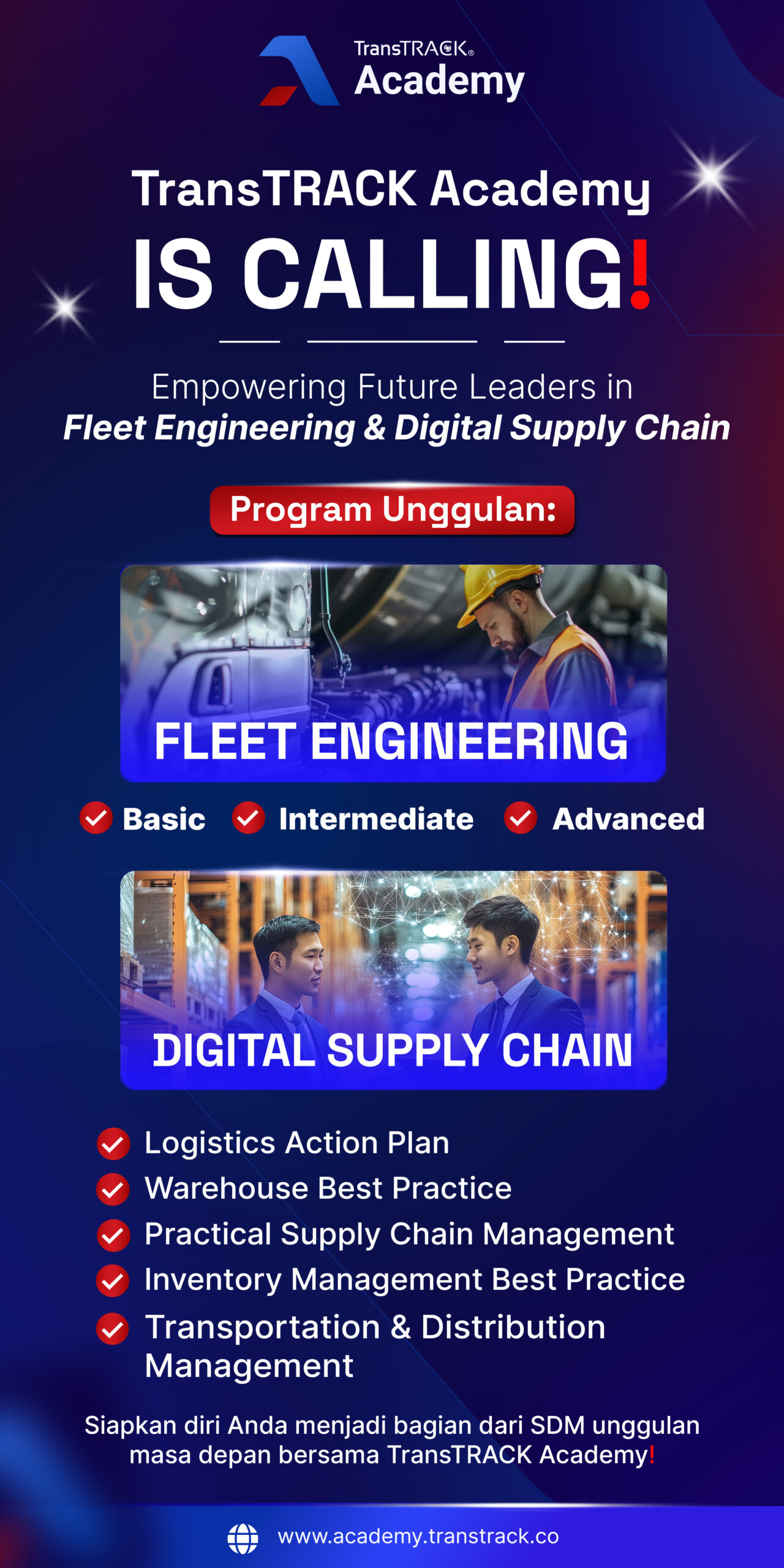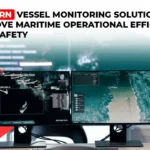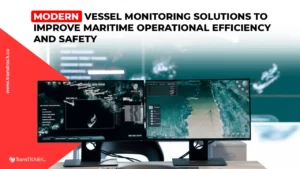Simplify your Fleet Business Management with Transportation Management System!
Posted on April 2, 2025 by Nur Wachda Mihmidati
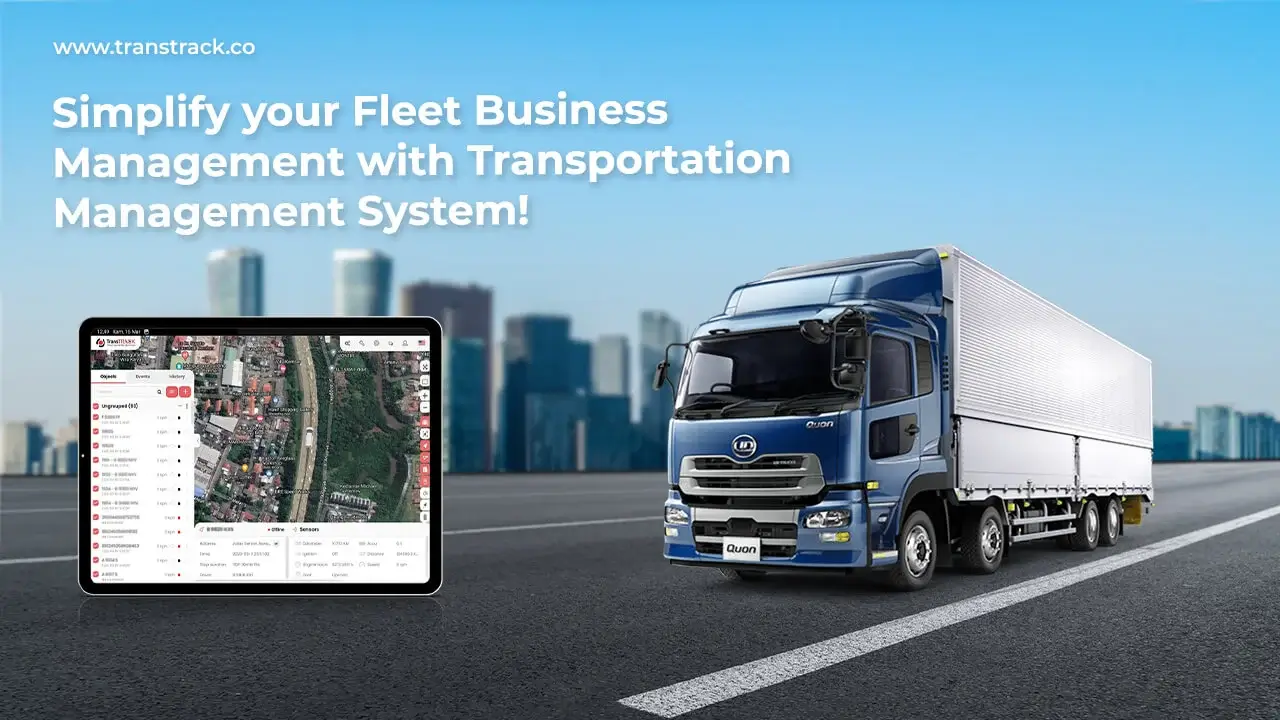
Transportation Management System helps companies in managing their business. Then, what is a Transportation Management System itself? What are the benefits and functions? You can read it through the article TransTRACK below!
Transportation Management System, What is it?
A Transportation Management System (TMS) is a logistics platform that uses technology to help businesses plan, execute, and optimize the physical movement of goods, both inbound and outbound, and ensure deliveries are appropriate, proper documentation is in place. Such systems are often part of a larger supply chain management (SCM) system.
Sometimes known as transportation management solutions or transportation management software, TMS provides visibility into day-to-day transportation operations, trade compliance information and documentation, and ensures timely delivery of goods and freight. Transportation Management System also streamlines the shipping process and makes it easier for businesses to manage and optimize their transportation operations, whether by land, air, or sea.
How Transportation Management System (TMS) Works
A TMS is a system that manages the entire shipping process, from planning to evaluation, by connecting various business systems to create an efficient logistics flow. Here’s a summary of how it works:
TMS Integration with ERP, WMS, and Third-Party Systems
TMS connects with ERP for order and billing data, WMS for stock, and third parties such as GPS and logistics vendors. This integration ensures automated information flow, reduces errors, and speeds up the logistics process.
Process from Order Input to Billing
Orders are entered into TMS, then the system schedules routes, fleets, and drivers. After dispatch, deliveries are monitored until completion and proof of delivery is uploaded. All data is used to automatically generate invoices and expense reports.
Real-Time Tracking and Delivery Performance Analytics
TMS monitors live vehicle positions, provides ETAs, and notifications for delays. Delivery data is analyzed to assess performance, cost efficiency, and SLA compliance.
What are the important features of a Transportation Management System
Transportation Management System is designed to simplify and optimize the entire freight forwarding process. The system is equipped with various key features that are integrated with each other to improve logistics efficiency, visibility, and control. Here are the key features of TMS:
Route Planning & Optimization
This feature helps determine the best route based on distance, travel time, traffic conditions, and vehicle capacity. The goal is to save fuel costs, avoid delays, and improve fleet operational efficiency.
Carrier Management & Load Planning
TMS allows users to manage a list of carriers, including rates, SLAs, and performance. Load planning ensures vehicle capacity is optimally utilized, both for single shipments and load consolidation.
Freight Auditing & Payment
With this feature, the system automatically matches invoices with actual shipment data. This speeds up the payment process, reduces costing errors, and detects incorrect invoices from logistics vendors.
Real-Time Shipment Tracking
The real-time tracking feature provides full visibility of vehicle position and shipment status. Users get automatic notifications in case of delays, route changes, or problems during the journey.
Analytics & Performance Reporting
TMS provides dashboards and analytical reports to monitor delivery performance, route effectiveness, delay rates, logistics costs, and vendor performance. This data is used for strategic decision-making and continuous service improvement.
How does TMS help reduce operational costs?
Transportation Management System (TMS) significantly helps companies reduce logistics operational costs through automation, optimization, and increased visibility of the delivery process. First, TMS reduces fuel costs and travel time through optimal route planning, minimizing distances and avoiding congestion. Secondly, with load planning and load consolidation, TMS ensures vehicles are filled efficiently, reducing empty trips and the number of unnecessary trips.
In addition, automation of paperwork and billing lowers the administrative burden and risk of human error, making staff time more productive. The freight auditing feature also prevents overcharges from vendors by matching actual costs and invoices. On the operational side, real-time tracking helps prevent delays and minimize costs due to SLA breaches or redelivery. Finally, with performance analytics, management can identify causes of inefficiencies and make data-driven improvements.
What should be considered when choosing a TMS?
Choosing the right TMS is critical to ensure the logistics solution truly supports operational needs and business growth. The following key factors need to be considered before making an implementation decision:
- Business Needs vs TMS Features Make sure the features offered by the TMS are aligned with the specific needs of the company, such as multi-fleet management, complex routes, strict SLAs, or real-time tracking. Don’t choose a system that is too complex or conversely, too simple – focus on features that support actual processes in the field.
- Scalability, Flexibility, and Integration A TMS should be able to scale as the business grows, easily adapt to workflow changes, and be able to integrate with other systems such as ERP, WMS, GPS tracking, or marketplaces. A system that is flexible and open to integration will prevent data silos and support end-to-end efficiency.
- Evaluate initial costs (license, integration, training) compared to long-term benefits such as fuel savings, labor efficiency, reduced SLA penalties, and increased customer satisfaction. A clear ROI will validate the investment and help gain management support.
Benefits of Transportation Management System
Service levels and freight savings are better for shippers using TMS solutions than traditional transportation management methods. Let’s take a look at the key benefits of Transportation Management System.
1. Better Customer Service
Customers today want lightning-fast delivery, the ability to make last-minute adjustments to their orders, and the ability to have a delivery time that is unique to them. They don’t just want it; they expect it as part of every order they place. It is a big challenge for companies to match customer expectations by adapting their operations. This is where a Transportation Management System comes into play, specifically a new generation TMS. The TMS will connect the systems responsible for managing orders and those responsible for managing the warehouse. Consolidating customer orders makes it easy to choose the most cost-effective courier service. Customers and businesses alike will benefit from this step!
2. Improved Warehouse Productivity
When it comes to warehouse efficiency, a TMS can help. In other words, the more we use the Transportation Management System, the less time we spend managing shipments and the more time we have to work on other tasks, including warehouse operations. As an added benefit, if our TMS is incorporated into other systems such as ERP, we will spend less time correcting errors caused by wrong entries or entering new data. For further cost reduction and increased efficiency, we can implement a Warehouse Management System together with a Supply Chain Visibility Solution (SCIS).
3. Tracking Shipments
With TMS, we can track where shipments are at all times. Organizations can be notified when cargo is late or has not arrived at its destination. Businesses benefit from knowing when service outages occur as they can immediately make the necessary adjustments. Tracking data can also be used to calculate the time required to complete a route in order to develop more effective route schedules.
4. Inventory Management
Companies can keep an eye on their order and delivery cycles in real-time with the help of a reliable TMS solution. As a result, they will be able to predict their inventory more accurately, which will increase supply chain transparency and accountability. In addition, TMS software will give us peace of mind knowing that our clients will receive their goods on schedule – thanks to the tracking feature. Having this level of control over our inventory management will benefit all other supply chain activities in the future, especially as ecommerce freight forwarding transportation grows.
5. Lower Shipping Costs
When it comes to minimizing shipping costs, good transportation management software can make a big difference. The best systems will look at the financial factors of each logistics route and determine which is the most efficient. In areas such as fuel consumption or driver overtime, it will provide user-oriented solutions to cut costs.
6. Supply Chain Visibility
Transparency across the supply chain is possible with today’s TMS solutions. Being able to view and access data from all other integrated systems in real-time is a significant advantage. Logistics managers can recognize and act on possible difficulties more quickly and effectively. Thus, client satisfaction is maintained at a high level without compromising performance or efficiency.
7. Enhanced Routing Capability
Optimized routing has never been as important as it is today, thanks to shorter order cycles and smaller cargo quantities. Businesses can adopt batch distribution with the help of appropriate TMS technology. Using this strategy, they can save money and better control their shipments as they are faster and cheaper. For carriers, selecting and delivering cargo may be as simple as choosing the best pool location. More complicated orders can be broken down and routed individually to save time and money.
8. Harmonized Dock Scheduling
Dock scheduling becomes more efficient as transportation planning and execution become more predictable. An effective TMS can cut lead times while ensuring high-quality transportation from one point to another by aligning shipments with dock schedules.
9. Accurate Order Fulfillment
The use of a Transportation Management System goes a long way to improve the accuracy of shipments. As a result of real-time tracking and supply chain insights, our order fulfillment is also much more accurate. Shipping errors and anomalies are completely eliminated – thanks to TMS software. Consumers should not be disadvantaged by any issues that may arise during transit, however minor.
10. Benefits of Transportation Management System: Minimal Documentation
Using TMS will save time and money as it will automate all our accounts. It will also reduce the amount of documentation and paperwork required to keep the company running smoothly. It is a win-win situation as administrative costs will go down while invoicing errors and improper billing are minimized as much as possible.
Functions of Transportation Management System
A transportation management system has 10 functional components for shippers and logistics companies using TMS:
- Carrier Management
- Procurement Management
- Route & Load Optimization
- Freight Execution Platform
- Visibility, Reporting & Analytics
- Supply Chain Communication Platform
- Logistics and Supply Chain Data Repository
- Freight Settlement for Audit & Payment
- Invoicing Functionality
- Business Intelligence (BI)
Best Transportation Management System
Transportation Management System or TMS is also found in TransTRACK. Similar to the explanation above, the TMS in TransTRACK itself is used to digitize your transportation fleet business operations, all in one system. You can also manage the health and condition of vehicles and your transportation and logistics business, from order management and planning, to cashiering and billing systems. What’s more, with TransTRACK TMS, you can monitor transportation fleet management, control vehicle maintenance, improve fleet utility and safety, business management and planning, vendor management, and shipping. All in one system, with TransTRACK.

By knowing everything about this Transportation Management System, then you can try all the features presented in TMS through TransTRACK to make your transportation management planning more organized!
Recent Post
Topic :
Recommended Articles
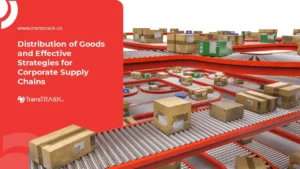
 Bahasa Indonesia
Bahasa Indonesia


